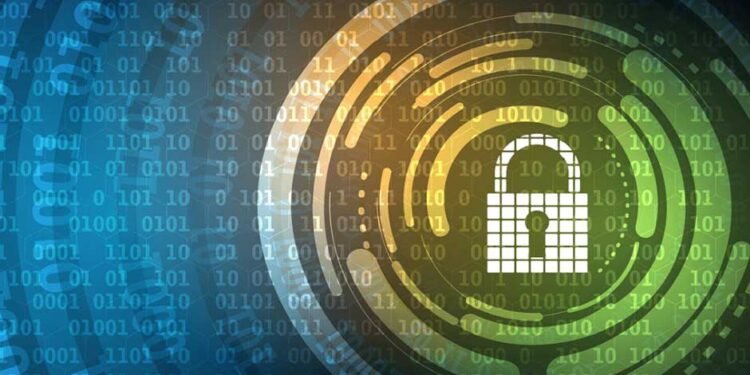In the dynamic landscape of modern healthcare, integrating Internet of Things (IoT) devices has revolutionized patient care, operational efficiency, and clinical outcomes. From wearable health monitors to sophisticated medical equipment, healthcare IoT devices offer unparalleled opportunities for real-time data collection, remote monitoring, and personalized treatment plans. These technological advancements have significantly enhanced the delivery of healthcare services, enabling more precise and timely interventions.
However, alongside these remarkable advancements comes a critical concern: cybersecurity. Securing IoT devices in healthcare environments is not merely a matter of protecting data; it is vital to safeguard patient privacy, ensure regulatory compliance, and maintain uninterrupted medical services. The unique challenges posed by IoT security in healthcare demand proactive strategies that mitigate risks without compromising innovation and accessibility. Engage with IT Support Nashville to secure IoT devices in your healthcare industry efficiently.
In this blog, we will explore what is IoT in healthcare and security strategies for IoT devices for healthcare.
8 Security Strategies for IoT Devices for Healthcare
-
Implement Strong Authentication Mechanisms
Implementing robust authentication mechanisms is crucial to enhance security for IoT devices in healthcare settings. Strong authentication processes, such as multi-factor or biometric verification, can help ensure that only authorized personnel can access sensitive data or control connected devices.
Healthcare organizations can significantly reduce the risk of unauthorized access and potential data breaches by requiring multiple verification forms before granting access. In addition, regular monitoring and updating of authentication protocols are essential to stay ahead of evolving cybersecurity threats in the healthcare IoT landscape.
-
Robust Access Controls
Robust access controls are crucial for ensuring the security of IoT devices in healthcare. Given the sensitive nature of patient data and the potential risks associated with unauthorized access, implementing strong access controls is essential for safeguarding information and maintaining patient privacy.
Access controls should include measures such as user authentication, role-based access permissions, encryption of data transmissions, and regular monitoring of access logs. By partnering with Managed IT Services Louisville, healthcare organizations can mitigate the risks posed by IoT devices and protect the integrity and confidentiality of patient information.
-
Encrypt Data Transmission
Encryption of data transmission is an essential security strategy for IoT devices in healthcare settings. By encrypting data as it is transmitted between devices and servers, healthcare organizations can ensure that sensitive information remains secure and protected from unauthorized access.
Encryption helps to safeguard patient data, medical records, and other confidential information from potential cyber threats and breaches. Implementing strong encryption protocols is crucial for maintaining the integrity and confidentiality of data exchanged among IoT devices in healthcare environments, ultimately enhancing overall cybersecurity measures within the industry.
-
Regular Firmware and Software Updates
Regular firmware and software updates are essential security strategies for IoT devices in healthcare. These updates are crucial in addressing vulnerabilities and patching any potential security loopholes that hackers could exploit. Healthcare organizations can significantly reduce the risk of cyberattacks and protect sensitive patient data by ensuring that all devices are running on the latest software versions.
Implementing a robust update management system is imperative to keep IoT devices secure and safeguard the integrity of healthcare systems. Regular monitoring and prompt deployment of firmware and software updates are critical components of a comprehensive cybersecurity strategy for IoT devices in healthcare settings.
-
Network Segmentation
Network segmentation is a crucial security strategy for IoT devices in healthcare settings. Organizations can limit the impact of a potential breach or unauthorized access by dividing the network into smaller segments, each with its own access controls and security measures. This practice helps to contain threats within a specific segment, reducing the risk of widespread infiltration.
Furthermore, network segmentation enables better control over data flow and enhances visibility into network activity, allowing for quicker threat detection and response. Implementing network segmentation as part of an overall cybersecurity strategy can significantly improve the security posture of IoT devices in healthcare environments.
-
Intrusion Detection and Prevention Systems (IDPS)
Intrusion Detection and Prevention Systems (IDPS) are absolutely critical in bolstering the security of IoT devices in healthcare environments. These systems are designed to monitor network traffic and detect potential threats or intrusions in real time. By analyzing patterns and anomalies in the data transmitted by IoT devices, IDPS can help prevent unauthorized access, data breaches, and malicious attacks.
Implementing robust IDPS solutions can significantly reduce the risk of cyber threats and safeguard sensitive patient information stored on IoT devices within healthcare environments. Organizations should prioritize the deployment of IDPS as part of their comprehensive security strategies to ensure the integrity and confidentiality of healthcare data.
-
Comprehensive Device Management
Comprehensive device management is a crucial security strategy for IoT devices in the healthcare sector. With medical devices’ increasing connectivity, ensuring that each device is securely managed becomes paramount to safeguarding patient data and maintaining operational integrity.
By implementing robust device management protocols, healthcare organizations can monitor device usage, update software regularly to patch vulnerabilities, and track device inventory to prevent unauthorized access. This proactive approach to managing IoT devices enhances the overall security posture and ensures compliance with industry regulations and standards in the healthcare sector.
-
Regular Security Audits and Assessments
Regular security audits and assessments are essential to maintaining IoT devices’ security in healthcare settings. These audits help identify vulnerabilities and weaknesses in the system that malicious actors could exploit.
By conducting regular assessments, healthcare organizations can stay proactive in addressing security risks and implementing necessary updates or patches to ensure patient data’s confidentiality, integrity, and availability. Healthcare providers must work closely with cybersecurity experts to develop a comprehensive audit strategy tailored to the unique challenges presented by IoT devices in healthcare. This can also include focusing on medical device cybersecurity, which can be important for protecting sensitive patient information and ensuring the reliability of medical equipment. Taking the assistance of specialized firms can give access to necessary expertise to protect these devices successfully.
Conclusion
Securing IoT devices in healthcare is critical to protecting sensitive patient information and maintaining the integrity of essential medical systems. Healthcare organizations must prioritize robust security measures such as device authentication, encryption, regular software updates, network segmentation, and comprehensive monitoring to address the inherent vulnerabilities of IoT devices. Furthermore, cultivating a culture of security awareness and strict adherence to industry standards and regulations will significantly bolster the defense of IoT ecosystems. By committing to these strategies, healthcare providers can ensure patient data safety and confidentiality while optimizing the functionality of their technological assets.












